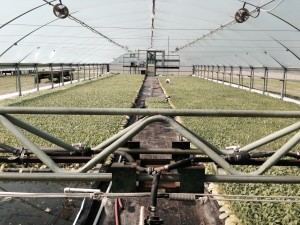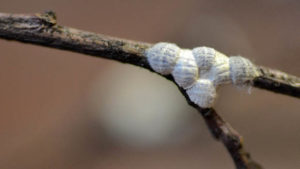Hibiscus Sawfly Active
Hibiscus sawfly, Atomacera decepta, is a common pest of hibiscus. Not much is known about this critter from what I …


El inglés es el idioma de control de esta página. En la medida en que haya algún conflicto entre la traducción al inglés y la traducción, el inglés prevalece.
Al hacer clic en el enlace de traducción se activa un servicio de traducción gratuito para convertir la página al español. Al igual que con cualquier traducción por Internet, la conversión no es sensible al contexto y puede que no traduzca el texto en su significado original. NC State Extension no garantiza la exactitud del texto traducido. Por favor, tenga en cuenta que algunas aplicaciones y/o servicios pueden no funcionar como se espera cuando se traducen.
Inglês é o idioma de controle desta página. Na medida que haja algum conflito entre o texto original em Inglês e a tradução, o Inglês prevalece.
Ao clicar no link de tradução, um serviço gratuito de tradução será ativado para converter a página para o Português. Como em qualquer tradução pela internet, a conversão não é sensivel ao contexto e pode não ocorrer a tradução para o significado orginal. O serviço de Extensão da Carolina do Norte (NC State Extension) não garante a exatidão do texto traduzido. Por favor, observe que algumas funções ou serviços podem não funcionar como esperado após a tradução.
English is the controlling language of this page. To the extent there is any conflict between the English text and the translation, English controls.
Clicking on the translation link activates a free translation service to convert the page to Spanish. As with any Internet translation, the conversion is not context-sensitive and may not translate the text to its original meaning. NC State Extension does not guarantee the accuracy of the translated text. Please note that some applications and/or services may not function as expected when translated.
Collapse ▲Hibiscus sawfly, Atomacera decepta, is a common pest of hibiscus. Not much is known about this critter from what I …
Originally posted on ecoIPM.org… You can often see hoverflies zipping in and out of flowers in your garden. They approach …
Lace bugs have been out most of the summer but the damage is becoming apparent now as populations grow. …
If you see ragged holes in leaves with no pest in site you may have slugs. Slugs thrive in …
This week Cliff Ruth told me they were finding red headed flea beetle adults and larvae in mountain nurseries. …
This week did not find many ambrosia beetles in our traps this week (there will always be a few) …
If you have conifers or other plants that seem to have grown weird, dangling pinecones, look again because you …
The Daylily leafminer is a recent pest from Asia. It was first detected in 2006 but has now spread …
Spittlebugs are a group of insects in the Family Cercopidae (Froghoppers & Spittlebugs) that have the unusual ability to …

We’ve begun scouting in some our sites for this field season! It’s warming up outside and we are excited to …

An updated version of the pdf “Peanut Disease Photos” has been posted. Color images of 16 diseases and disorders …
Organic tobacco acreage has increased throughout the southeast for 2015, and along with this increase has come more questions …

The emerald ash borer has been found in Wayne County. Other counties in North Carolina where EAB has been …

Eriococcidae is a family of scale insects commonly called ‘felt scales’. This is a different family than the common …
This link (Soybean 2015) provides a recorded presentation intended for agent training or broadcast in grower meetings. Please report …